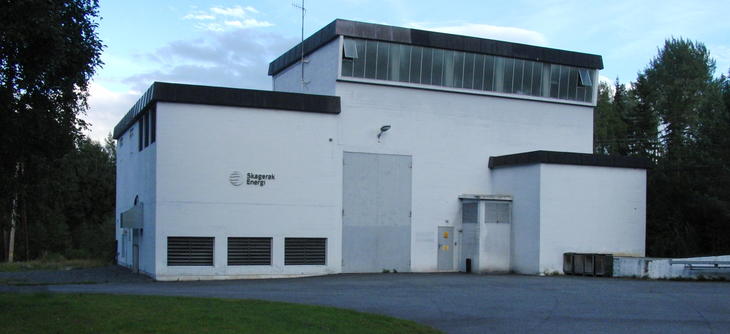Vrenga

© PeltonMan, Wikimedia Commons
Vrenga Power Plant is located by Numedalslågen on the east side of Blefjell mountain.
Construction of Vrenga Power Plant in Buskerud county was begun in 1958, and the plant was commissioned in January 1960. The power plant utilises the catchment area spanning 100 square kilometres on Blefjell mountain.
Power supply in Asker and Bærum (suburbs of Oslo) was not satisfactory in the early 1950s. At times, strict rationing and nighttime disconnection were necessary in the period after 1955. After conducting studies in Numedal valley, the power company decided to make the development of Vrenga Power Plant in Flesberg municipality a reality, in order to cover the immediate needs. Skagerak Kraft AS (then SKK Energi AS) took over Vrenga Power Station by acquiring it from Energiselskapet Asker og Bærum Produksjon on 1 July 1999.
Vrenga’s catchment area consists of seven large and small lakes that have been regulated and give a total reservoir volume of 29 million cubic metres. The waterfall height of Vrenga is approx. 380 metres measured from Hoppestadvannet lake down to the power station located a few hundred metres from Numedalslågen. The power station has a horizontal Pelton generator installed with an output, after the 1991 upgrade, of 12 MW (originally around 11 MW).
The power station is connected to the regional grid in Kongsberg via a separate 66 kV cable, as well as via the 22 KV cable to the local grid in Flesberg. Vrenga’s flow rate is up to 4.8 cubic metres per second, and the station has an average annual production of 84 GWh. The Gjuva watercourse is conveyed to Vrenga via a 1600-metre long tunnel from Hanavatn to Hølseter.
Owner: Skagerak Kraft AS, 100%.








